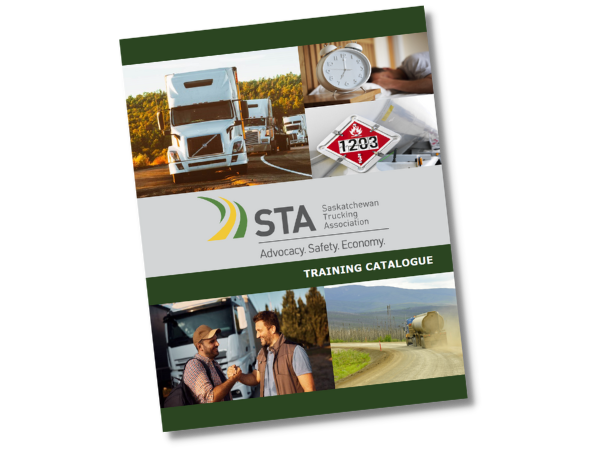
Ensuring Safe Cargo Securement: Essential Strategies for Truck Drivers
Apr 08, 2024
As part of our ongoing commitment to safety, it's crucial for all truck drivers to prioritize proper cargo securement techniques. Securing cargo effectively not only protects the goods being transported but also ensures the safety of everyone on the road. In this edition of our safety newsletter, we'll explore some essential strategies for truck drivers to enhance cargo securement practices.
- Know Regulations: Familiarize yourself with regulations governing cargo securement. Compliance with weight limits, tie-down requirements, and other guidelines outlined in regulations and according to industry best practice is essential for safe transport.
The National Safety Code for Motor Carriers, Standard 10 – Cargo Securement is typically the standard in most jurisdictions. The purpose of this standard is to ensure that cargo is properly secured during transportation to prevent accidents, injuries and damage to both cargo and the vehicle. While Saskatchewan generally adopts the NSC code there is also The Security of Loads Regulations, 2013.
- Inspect Equipment: Before loading cargo, conduct a thorough inspection of all securement equipment, including straps, chains, binders, and anchor points. Look for signs of wear, damage, or corrosion that could compromise their effectiveness.
- Use Proper Restraints: Select appropriate restraints based on the type and size of the cargo. Utilize tie-downs, chains, straps, or blocking and bracing techniques as needed to prevent movement or shifting during transit.
- Secure Heavy Items First: Prioritize securing heavier items first and position them towards the front of the trailer or over the axles to maintain stability and balance. This helps reduce the risk of tipping or imbalance during transport.
- Check Load Distribution: Ensure that cargo is evenly distributed and properly balanced within the trailer. Avoid overloading one side or stacking heavy items on top of lighter ones, as this can lead to instability and potential accidents.
- Use Adequate Tie-Downs: Ensure tie-downs are properly rated for the weight and size of the cargo and are adequately tensioned to secure the load. Supplement with additional tie-downs as necessary to meet minimum securement requirements.
- Inspect During Transit: Periodically check cargo securement during transit to confirm that restraints remain tight and in place. Adjust tie-downs or re-secure any loose or shifting cargo promptly to prevent accidents or damage.
- Consider Environmental Factors: Account for environmental conditions such as wind, road conditions, and temperature fluctuations that may affect cargo securement. Adapt securement techniques or add extra restraints as needed to address changing conditions.
- Follow Manufacturer Guidelines: Adhere to manufacturer guidelines for securing specific types of cargo, including machinery, equipment, or hazardous materials. Follow recommended procedures for safe and secure transport.
- Document Securement Procedures: Maintain detailed records of cargo securement procedures, including the type and number of tie-downs used, their location, and the cargo's weight. Documentation serves as proof of compliance and aids in audits or inspections.
These strategies go along way, but proper training, understanding and practice are key factors to ensure that our loads are transported safely and securely, minimizing the risk of accidents, injuries, and damage. Let's continue to prioritize safety in our industry.
Stay safe on the road!
STA Training
We have a downloadable Training Catalogue!
Don't wait - sign up for one of our courses today and take the first step towards becoming a safer, more knowledgeable driver!



